Teaching English in China is a rewarding experience, but understanding how you fit in is essential to success.
Chinese Folklore for Halloween
Halloween is a time when stories of the supernatural and the mysterious come to life. While many are familiar with the Western ghosts and ghouls, the Far East has its own rich tapestry of spooky tales rooted in folklore that can send shivers down your spine! This Halloween, let’s delve into the mysterious and unearth some of the most hair-raising tales from the heart of China.
– Richard Edwell, Teach TEFL in China, 20 October 2023
In Chinese folklore, the seventh month of the lunar calendar is known as the “Ghost Month.” The fifteenth day, in particular, is marked by the Hungry Ghost Festival, where it is believed that the gates of the underworld open, releasing spirits to roam the Earth. People offer food and burn incense to appease these wandering souls, but not all spirits are friendly.
One of the most terrifying entities is the “Hungry Ghost,” depicted with a distended belly and a neck too thin to swallow. These spirits are said to be condemned to eternal hunger, and during the Hungry Ghost Festival, they roam the human world in search of food, often causing mischief and misfortune.
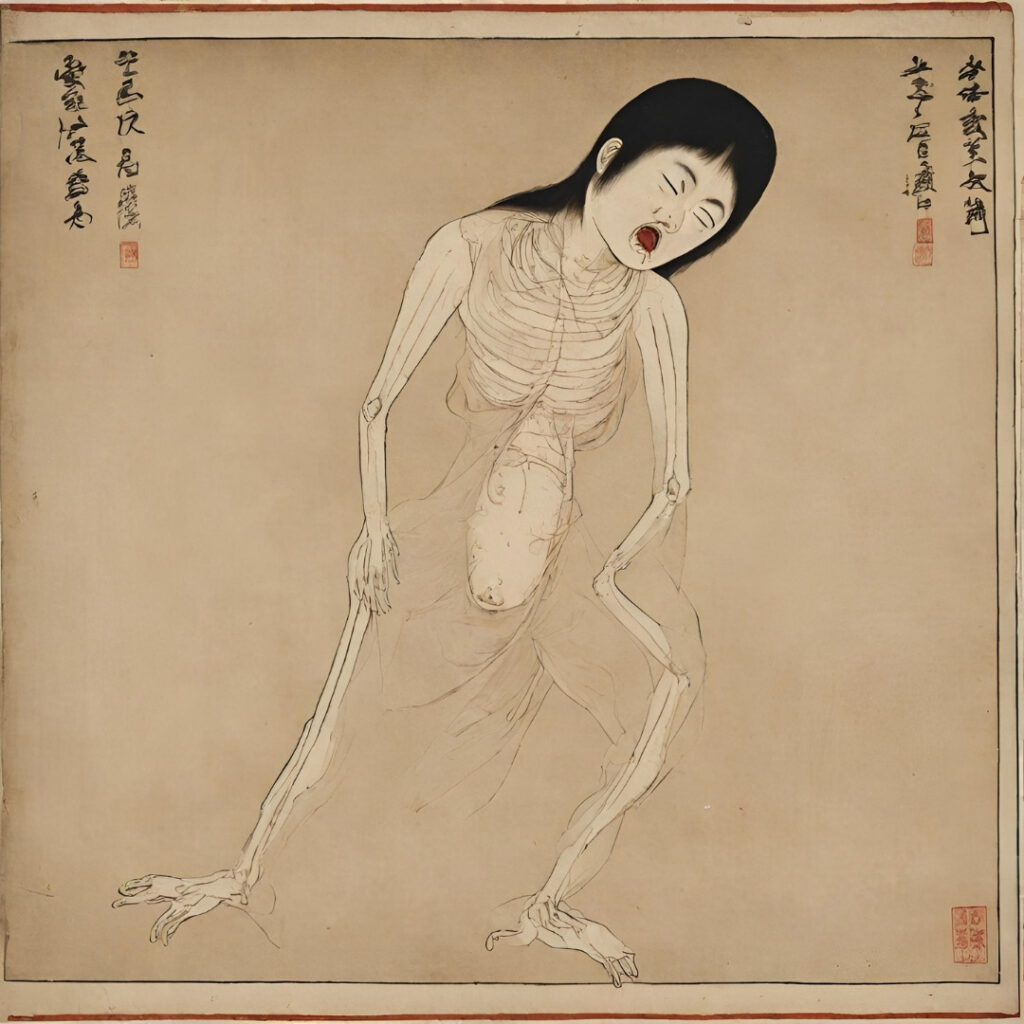
Chinese folklore is replete with stories of vengeful spirits, and one of the most famous is the tale of the “White-Haired Woman.” Legend has it that this ghostly figure appears as an attractive young woman with long, white hair. However, her appearance belies her sinister nature. The White-Haired Woman seeks to seduce and then harm unsuspecting men, often leading them to their doom.
The story serves as a cautionary tale, warning against the dangers of lust and the allure of the unknown. The White-Haired Woman is a reminder that not all that glitters is gold, especially on a moonless night in rural China.
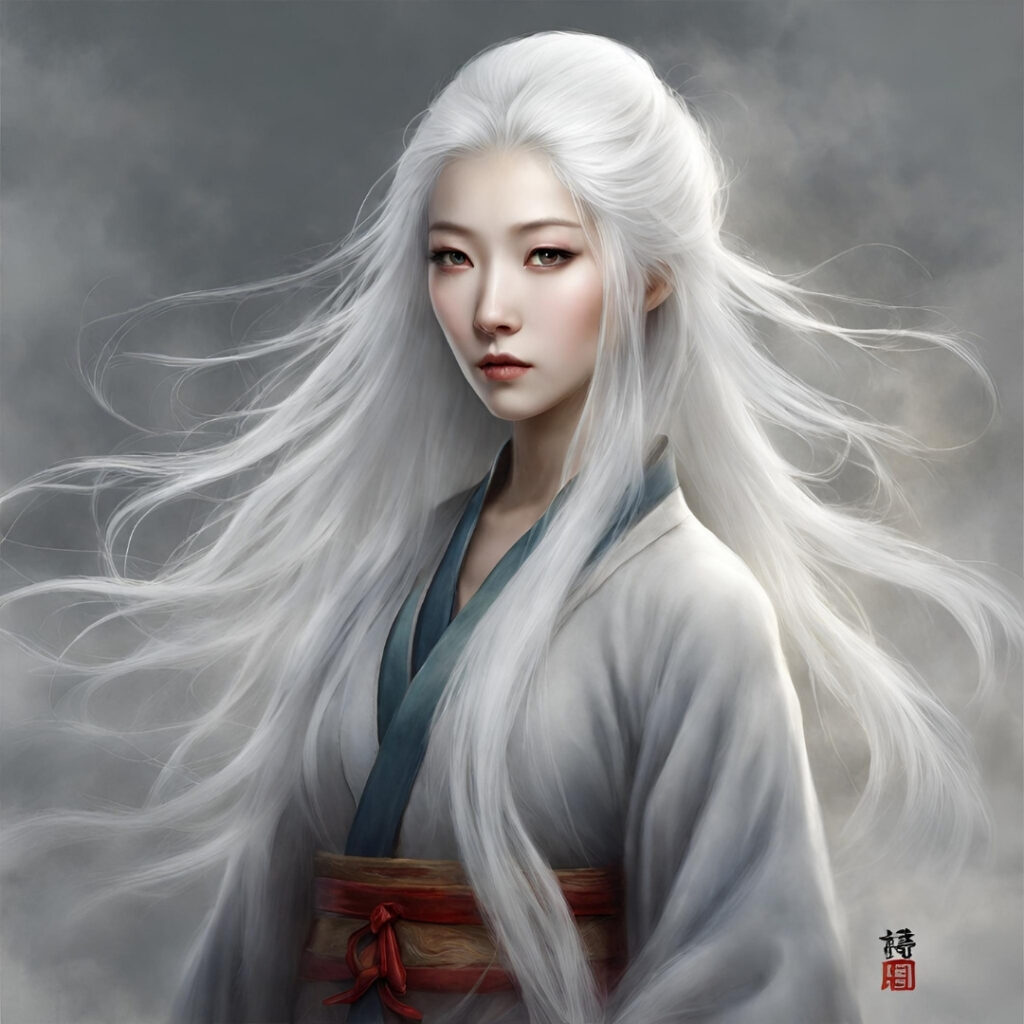
Imagine encountering a vampire, but not one who flies or turns into a bat, but rather hops towards you with outstretched arms! This is the Jiangshi, the Chinese Hopping Vampire. In Chinese folklore, these undead creatures rise from the dead to suck the life force from the living, rather than feasting on blood.
Jiangshi are said to be reanimated corpses that hop rather than walk, as rigor mortis has set in, making their movements stiff and awkward. They are often depicted in Qing Dynasty attire, with long hair, and a distinctive hat. To repel these malevolent beings, Taoist charms and amulets are used to ward them off.
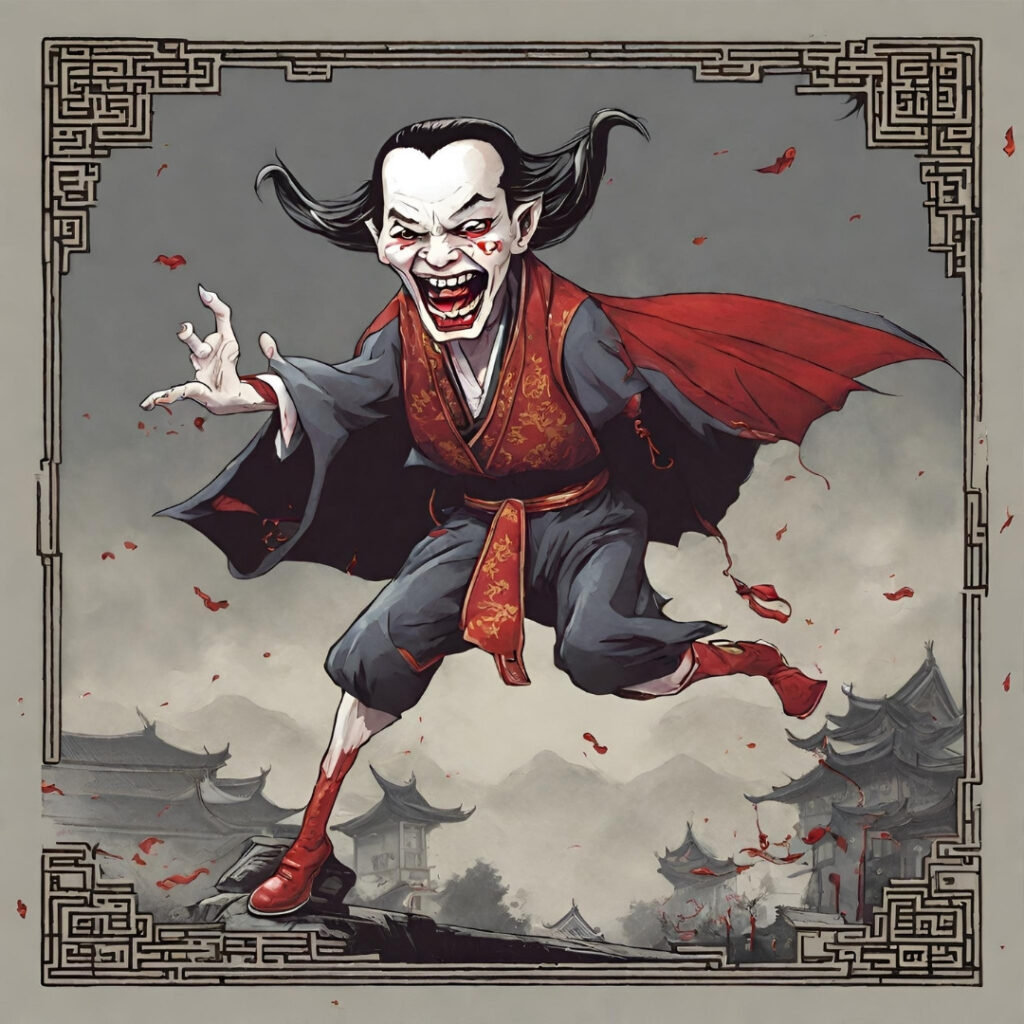
In Chinese folklore, fox spirits, known as “Huli Jing,” are often portrayed as beautiful women who can transform into seductive figures to lure unsuspecting men. These supernatural beings are said to possess immense power and intelligence and are often depicted with nine tails.
While fox spirits can be benevolent, offering wisdom and protection, they can also be malevolent, causing chaos and misfortune. Tales of encounters with these shape-shifting fox spirits abound in Chinese folklore, with themes of love, temptation, and danger intertwined.
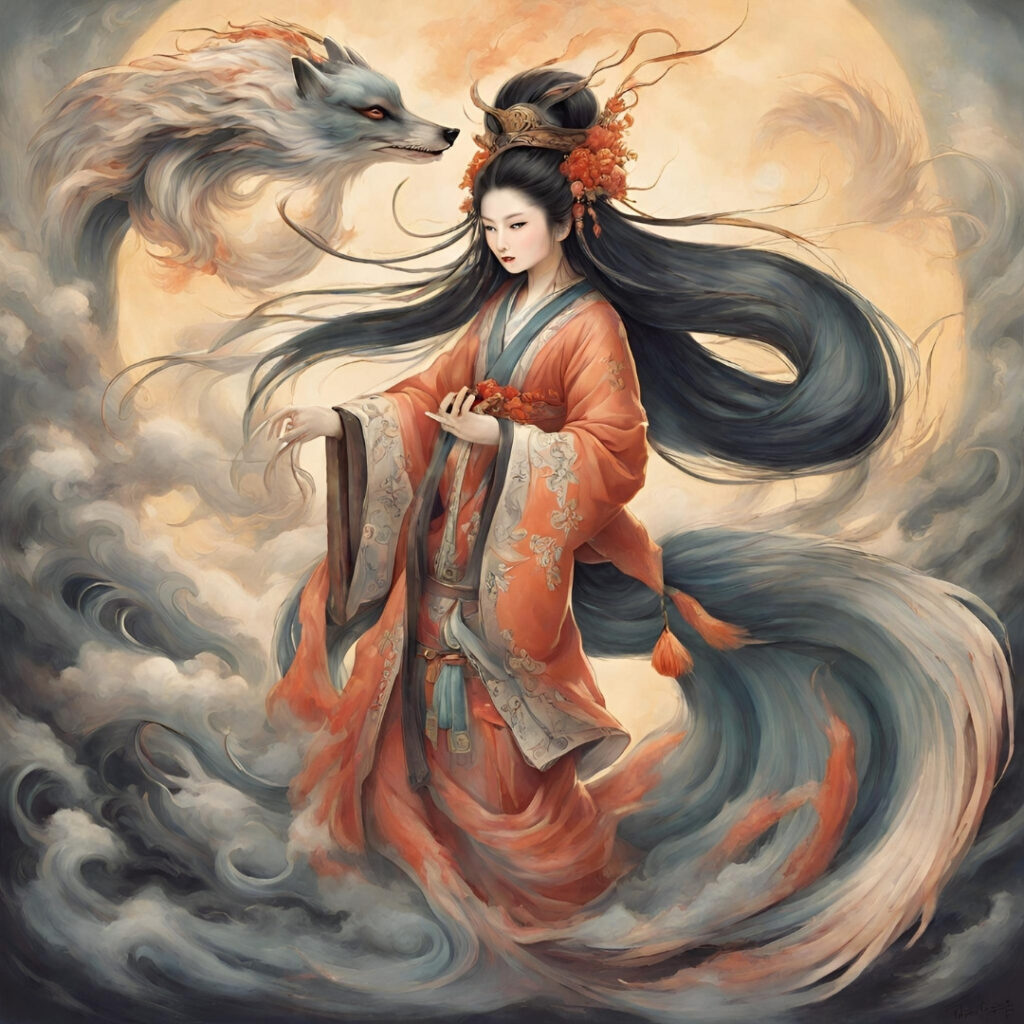
Zhong Kui is a famous character in Chinese folklore, often depicted as a fierce demon queller. While he may not be a traditional monster, his gruesome appearance and role in fighting evil spirits make him an intriguing Halloween figure.
Legend has it that Zhong Kui was a scholar who failed the imperial exams, leading him to take his own life. Upon entering the afterlife, he became a demon queller and protector of the living. He is depicted as a grotesque figure with a ferocious appearance, wielding a sword and often accompanied by a ghostly servant.
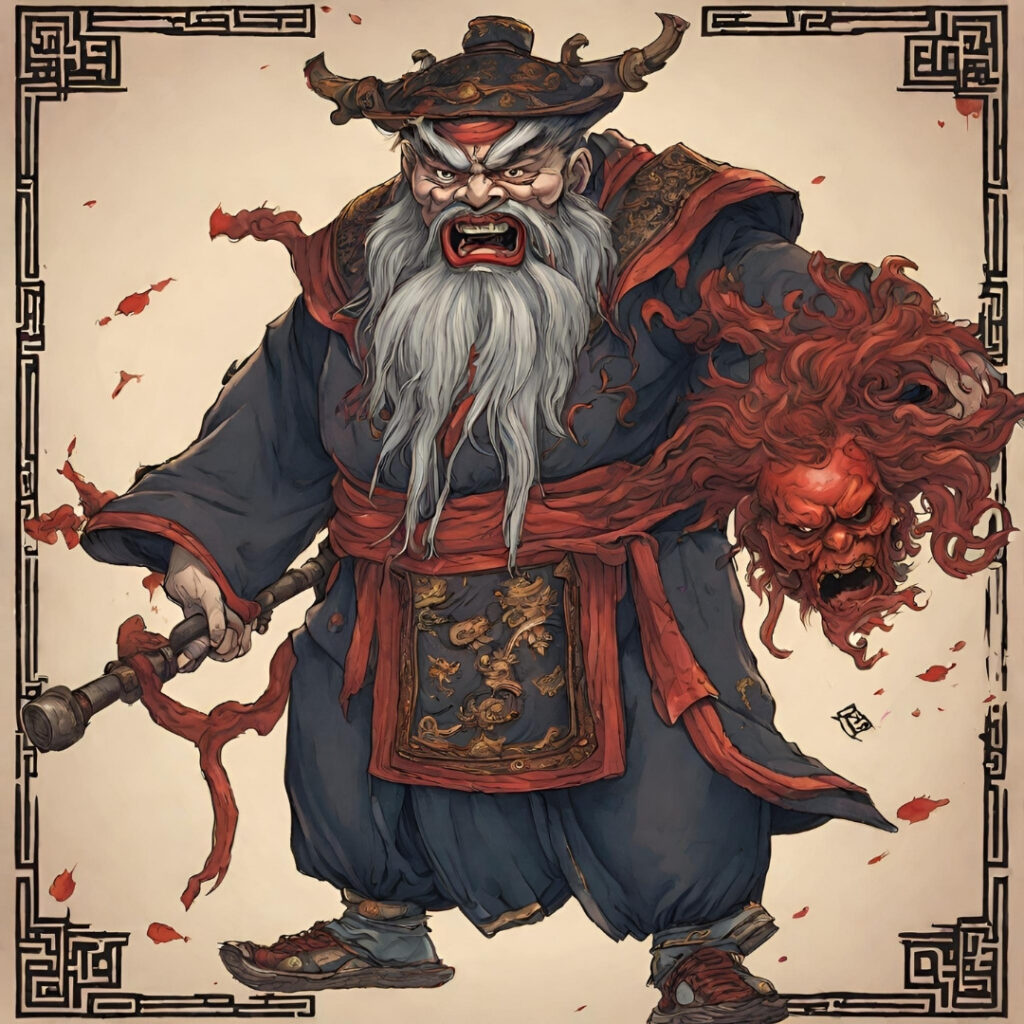
The story of Nian, the beast that emerges during Chinese New Year, is a chilling tale often told to explain the customs and traditions associated with the holiday. Nian is said to be a fearsome creature with an insatiable appetite for human flesh. To protect themselves from Nian, villagers would light firecrackers, decorate their homes with red banners, and wear red clothing, as this color was believed to fend off the beast.
Nian’s name means “year,” and the tradition of warding off this mythical monster has evolved into the celebration of Chinese New Year. Yet, the story of Nian remains a spooky reminder of the primal fear that inspired these customs.
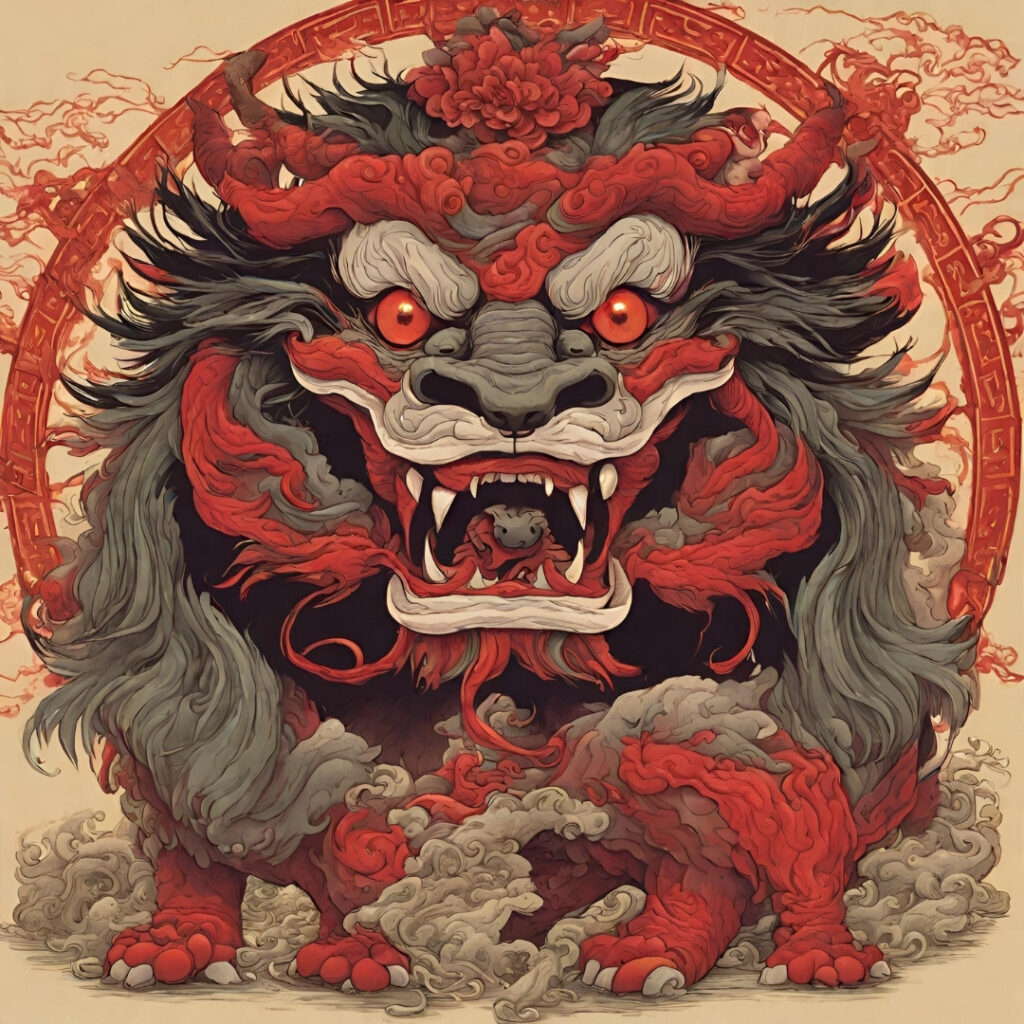
The Chinese concept of the afterlife is far more elaborate and intricate than the Western notion of heaven and hell. In Chinese folklore, the souls of the deceased must pass through the Ten Courts of Hell, each presided over by a judge who determines their fate based on their deeds in life.
The Ten Courts of Hell are a terrifying labyrinth where souls face gruesome punishments for their sins. These include being boiled in cauldrons, sawed in half, and even flayed alive. The concept of these hells is a vivid and nightmarish vision that can send shivers down your spine.
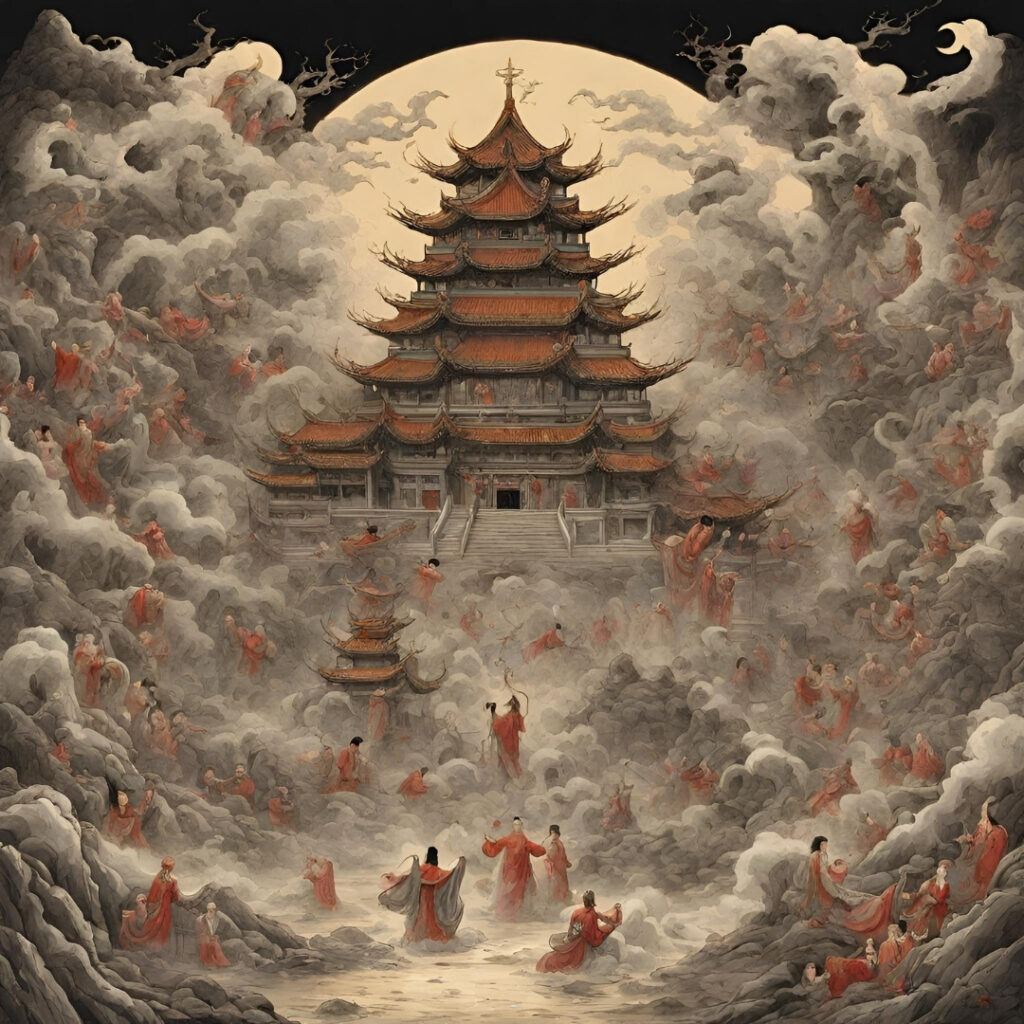
Chinese folklore is a treasure trove of spooky and supernatural tales that can send chills down your spine. From vengeful spirits to hopping vampires, the stories and legends from the heart of China offer a unique and rich perspective on the macabre and something new to look into this Halloween!
Recent Posts
Teaching English in China is a rewarding experience, but understanding how you fit in is essential to success.
As the Year of the Dragon approaches on the lunar calendar, China is gearing up for the grand celebration of Chinese New Year. For teachers working in China...
5 Fun Chinese TV shows to check out From gripping historical dramas to fantastical tales woven with martial arts mastery, the landscape …
Open Classes in Chinese Kindergartens Plus 12 free lesson plans The words ‘Open Class’ will likely stab fear into the heart of …